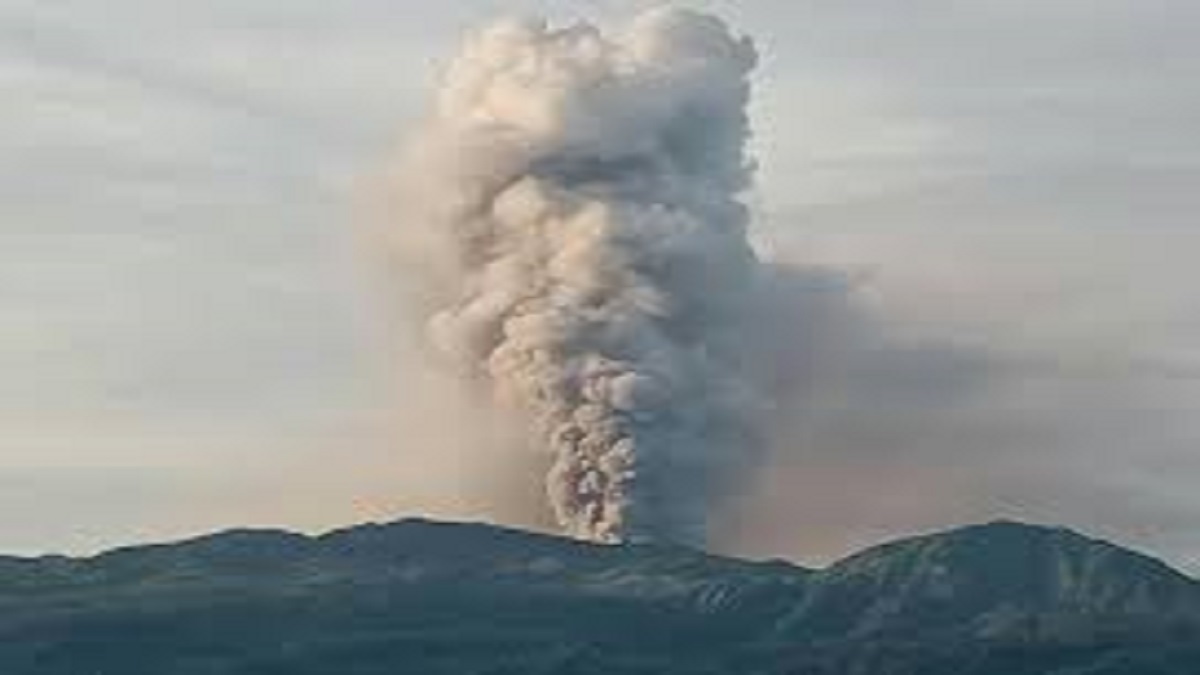Mount Dukono, one of Indonesia’s most active volcanoes, erupted on February 20, 2025, spewing a massive ash cloud up to 2,000 meters into the air. The eruption, occurring on Halmahera Island in North Maluku province, has prompted Indonesian authorities to issue urgent aviation warnings and safety advisories for residents.
The Volcanology and Geological Disaster Mitigation Centre (PVMBG) raised the alert level, warning aircraft to maintain a 5-kilometer distance from the volcano due to the risk of volcanic ash interfering with flights. Local communities have also been advised to stay at least 4 kilometers away from the active Malupang Warirang crater and take necessary precautions, including wearing face masks to avoid inhaling ash particles.
How Dangerous Is Mount Dukono’s Eruption?
Mount Dukono has a long history of frequent eruptions, making it one of Indonesia’s most persistent volcanic threats. Standing at 1,087 meters above sea level, the volcano has been continuously active since 1933. Historical records indicate that a major eruption in 1550 led to a lava flow that filled the strait between Halmahera and Mount Mamuya. Other significant eruptions occurred in 1719, 1868, and 1901. In December 2024, Dukono erupted again, sending ash plumes as high as 1,200 meters. These recurring eruptions highlight the volcano’s unpredictable nature, posing constant challenges to both local communities and authorities.
What Impact Does Volcanic Ash Have on Aviation?
The recent eruption has raised serious concerns for aviation safety. The Indonesian authorities have issued an orange-level Volcano Observatory Notice for Aviation (VONA), a warning system for pilots and airlines regarding volcanic hazards. Volcanic ash can severely damage aircraft engines, reduce visibility, and pose a major risk to flight operations. In the past, similar eruptions from Indonesian volcanoes have disrupted international flights, forcing airlines to cancel or reroute planes. Given the scale of Mount Dukono’s eruption, airlines have been advised to avoid the affected airspace until conditions improve.
How Are Authorities and Residents Responding to the Eruption?
In response to the ongoing volcanic activity, local authorities have reinforced safety measures, urging people to stay outside the exclusion zone and wear protective gear. The government is closely monitoring the situation, and emergency response teams are on alert to assist affected residents. Historical data suggests that Dukono’s eruptions can last for extended periods, meaning continued vigilance is necessary. The PVMBG and local disaster agencies are coordinating efforts to minimize health risks and disruptions caused by the volcanic ash.
Mount Dukono’s latest eruption is a reminder of Indonesia’s volatile geological landscape, where active volcanoes frequently pose risks to both residents and global aviation. Continuous monitoring, timely warnings, and effective response measures are crucial to managing the impact of such natural disasters.
Mount Dukono Eruption: Key Points
| Aspect | Details |
|---|---|
| Why in News? | Mount Dukono erupted on February 20, 2025, spewing a 2,000-meter ash cloud, triggering aviation warnings and safety advisories. |
| Location | Halmahera Island, North Maluku, Indonesia |
| Alert Issued | Orange-level Volcano Observatory Notice for Aviation (VONA) |
| Aviation Impact | Flights warned to avoid a 5-km radius due to volcanic ash hazards. |
| Public Advisory | Residents advised to stay 4 km away from the crater and wear face masks. |
| Historical Activity | Continuous eruptions since 1933; major past eruptions in 1550, 1719, 1868, 1901, and December 2024. |
| Current Monitoring | Authorities closely tracking volcanic activity and reinforcing safety measures. |



 Operation Hawkeye: US and Jordan Strike ...
Operation Hawkeye: US and Jordan Strike ...
 India and the Netherlands Set Up Joint T...
India and the Netherlands Set Up Joint T...
 Brazil Hands Over BRICS Presidency to In...
Brazil Hands Over BRICS Presidency to In...







